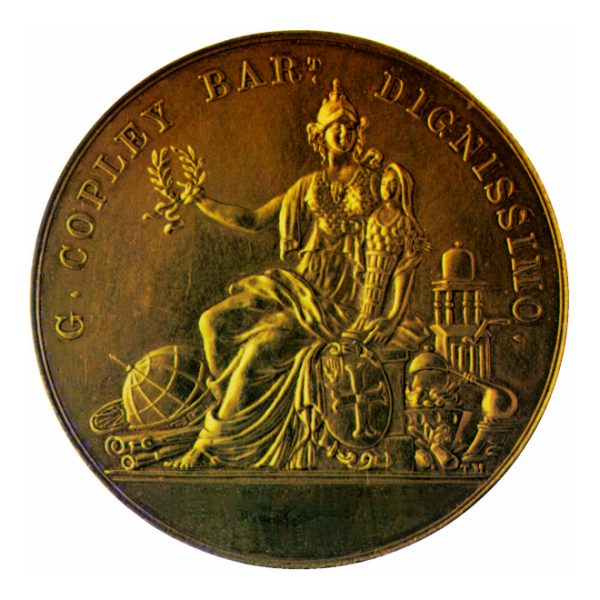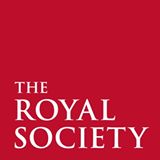Contact Details
Central Library
The Wellgate
Dundee
DD1 1DB
Opening Hours
| Day | Time |
|---|---|
| Monday, Tuesday, Thursday, Friday | 9.00am to 6.00pm |
| Wednesday | 10.00am to 6.00pm |
| Saturday | 9.30am to 5.00pm |

Copley Medal
1814
James Ivory was born on 17th February, 1765, the first son of a well known Dundee clockmaker, also James Ivory. He was schooled in Dundee before matriculating at the University of St. Andrews in 1779.
For four years Ivory studied Arts (which at that time would have included sciences) and then spent two years in theology. He left St. Andrews to go to Edinburgh for the final year of theology, which was required to become a Church of Scotland Minister, but never followed his intended path.
He returned to Dundee in June of 1786 to teach mathematics at the newly founded Dundee Academy, which had come about partly through Ivory’s own efforts. In a draft prospectus (Page 1, Page 2) for the school, Ivory’s fees as Assistant Master are given as half-a-guinea per session, compared to two guineas for James Weir, the Rector. Ivory was the most poorly paid of the three teachers, but this did not reflect his ability. Weir recognised this and “as a profound mathematician confessed to his friends his inferiority to his assistant” [R. Mudie, Dundee Delineated, Dundee, 1822. p.195].
For four years Ivory studied Arts (which at that time would have included sciences) and then spent two years in theology. He left St. Andrews to go to Edinburgh for the final year of theology, which was required to become a Church of Scotland Minister, but never followed his intended path.
He returned to Dundee in June of 1786 to teach mathematics at the newly founded Dundee Academy, which had come about partly through Ivory’s own efforts. In a draft prospectus (Page 1, Page 2) for the school, Ivory’s fees as Assistant Master are given as half-a-guinea per session, compared to two guineas for James Weir, the Rector. Ivory was the most poorly paid of the three teachers, but this did not reflect his ability. Weir recognised this and “as a profound mathematician confessed to his friends his inferiority to his assistant” [R. Mudie, Dundee Delineated, Dundee, 1822. p.195].
Perhaps understandably, given his humble fees, Ivory quit the school for business in November 1789, barely a month into Dundee Academy’s fourth year. He went into partnership with a Mr Douglas and started up a flax mill on Carbet Water at Douglastown, near Forfar. Ivory was the managing partner but still devoted much of his time to mathematics, presenting four papers to the Royal Society of Edinburgh during this period. The venture in manufacturing was never successful and the partnership was dissolved with losses in 1804.
Ivory was quickly re-employed, returning to teaching when he was appointed Professor of Mathematics at the Royal Military College, then at Marlow but later at Sandhurst. It was in his early years here that he gave gave his first paper to the Royal Society of London. He was very highly regarded at the College and when, in 1819, he retired without the requisite years for a full army pension, this was pressed for and obtained on his behalf by his colleagues. In 1814 Ivory won the prestigious Copley Medal presented every year by the Royal Society of London. His citation read “For his various Mathematical Contributions printed in the Philosophical Transactions”.
Ivory’s premature retiral was brought about by ill health: it seems he was an early sufferer from stress, pressured by the long hours and vast effort he spent on higher mathematical research, in addition to his teaching.
His retirement was spent in London, initially with little more than the most basic necessities. This changed when his friend Henry Brougham, the then Lord Chancellor, recommended him for a knighthood. Ivory was made a Knight of the Order of Hanover and his Civil List pension was raised to £300 per annum. He lived out his last years in comfort, continuing to contribute to the Philosophical Transactions of the Royal Society.
Ivory offered his scientific library to Dundee in 1829, although there was no suitable place to house the books at that time. It was not until 1866 that they were received by Dundee Public Library, after the death of Ivory’s heir – his nephew, James, Lord Ivory. There are approximately 300 books in the collection, dating from the sixteenth century. Unfortunately, only three remain in their original bindings, the rest having been rebound in matching blue buckram.
In total Ivory presented 15 papers to the Royal Society and received 3 medals.
His first paper was in 1809, and he gave 3 more before he was elected a member in 1815. His papers were generally regarded as elucidating and innovative although he is considered to have unfairly criticised Laplace over a portion of Mecanique Celeste. His papers continued reasonably regularly until his last in 1839, at the age of 74.
The medals Ivory received were the Copley, in 1814, for his contributions to the Philosophical Transactions, and two Royal Medals, in 1826 and 1839, for papers on astronomical refractions (nos. 6 and 14 in the list of his papers to the Royal Society). The latter paper was the Bakerian Lecture for 1838.
All these papers can be found in the Philosophical Transactions of the Royal Society of London.
- On the Attractions of Homogenous Ellipsoids. (Phil. Trans. 1809, p.345)
- On the Grounds of the Method which Laplace has given in the second chapter of the third book of his Mecanique Celeste for computing the Attractions of spheroids of every description. (ibid. 1812, p.1)
- On the Attractions of an extensive class of Spheroids. (ibid. 1812, p.46)
- A New Method of deducing a first Approximation to the Orbit of a Comet from three Geocentric Observations. (ibid. 1814, p.121) 5 On the Expansion in a series of the Attraction of a Spheroid. (ibid. 1822, p.99)
- On the Astronomical Refractions. (ibid. 1823, p.409)
- On the figure requisite to maintain the Equilibrium of a Homogenous Fluid Mass that revolves upon an axis.(ibid. 1824, p.85)
- On the Equilibrium of Fluids, and the Figure of a Homogenous Planet in Fluid State. ibid. 1831, p.109)
- On the Theory of the Elliptic Transcendents.(ibid. 1831, p.349)
- On the Theory of the Perturbations of the Planets.(ibid. 1832, p.195)
- On the Development of the Disturbing Function, upon which depend the inequalities of the Motions of the Planets, caused by their Mutual Attraction.(ibid. 1833, p.559)
- On the Equilibrium of a Mass of Homogenous Fluid at liberty.(ibid. 1834, p.491)
- Of such Ellipsoids consisting of homogenous matter as are capable of having the resultant of the attraction of the mass upon a particle in the surface, and a centrifugal force caused by revolving about one of the axes, made perpendicular to the surface.(ibid. 1838, p.57)
- On the Theory of Astronomical Refractions.(ibid. 1838, p.169)
- On the Condition of Equilibrium of an Incompressible Fluid, the particles of which are acted upon by Accelerating Forces.(ibid. 1839, p.243)
Academie Royale des Sciences: Astronomical Observations
Sources
- Abstracts of the Papers printed in the Philosophical Transactions of the Royal Society of London. Vol.IV 1837–1843 London, 1843
- Dictionary of National Biography London, 1892
- Dundee Celebrities of the Nineteenth Century W. Norrie, Dundee, 1873
- Dundee Delineated R. Mudie, Dundee, 1822
- Roll of Eminent Burgesses of Dundee 1513–1886 Dundee, 1887

